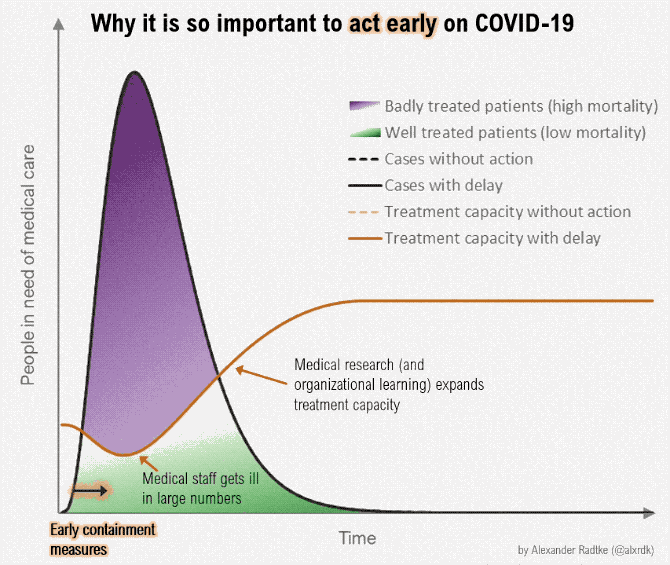You do not have to be good.
You do not have to walk on your knees
for a hundred miles through the desert, repenting.
You only have to let the soft animal of your body
love what it loves.
Tell me about despair, yours, and I will tell you mine.
Meanwhile the world goes on.
Meanwhile the sun and the clear pebbles of the rain
are moving across the landscapes,
over the prairies and the deep trees,
the mountains and the rivers.
Meanwhile the wild geese, high in the clean blue air,
are heading home again.
Whoever you are, no matter how lonely,
the world offers itself to your imagination,
calls to you like the wild geese, harsh and exciting–
over and over announcing your place
in the family of things.
– “Wild Geese,” Mary Oliver
The Quarantine
First identified in December 2019, Covid-19 has since infected over three million people worldwide and taken the lives of more than 219,000 people.1 Since the virus is spread through close contact, cities and countries all over the world have sent their people indoors, issuing shelter-in-place orders, closing down schools, public buildings, restaurants, stores, parks, and more. In an attempt to flatten the curve (see graphic below), the world has gone into quarantine, everyone following orders to stay indoors and isolate themselves entirely. While this self-isolation and social distancing are vital practices in order to slow the spread of Covid-19 and ease the strain on our hospitals, it has placed us in a type of loneliness and disheartenment at a scale at which we’ve never experienced.

While we work, learn, play, and live our lives in our homes, we are finding ourselves in a unique situation—we are united by our experiences, our emotions, our fear, and confusion. The quarantine has brought devastation to many. The effects reach beyond those infected and those who have lost loved ones to the virus. In the US alone, over 16 million people filed for unemployment in the span of three weeks. 2 People are beginning to protest the stay-at-home orders in many states, gathering in public with signs, arguing that risking their health is not worth losing their jobs and livelihoods. 3 The public has been raising concerns about mental health resources, stating that this quarantine will have profound effects on some people’s mental state. Professor Rory O’Connor, a writer for The Lancet Psychiatry, wrote, “Increased social isolation, loneliness, health anxiety, stress, and an economic downturn are a perfect storm to harm people’s mental health and wellbeing.” 4
In the midst of this devastation, stuck indoors with our thoughts and emotions, many of us are turning to our various forms of art for solace.
Covid and Art
Because of the shelter-in-place orders, art in its public forms has been immobilized—production is paused, museums and galleries are closed, theaters can’t operate, performances and gatherings are postponed to an unknown date in the future. Everything is TBD. As we all sit indoors, however, pondering life as we know it and everything that is unknown, art itself has never been more vital. As Suzy Delvalle, President and Executive Director of Creative Capital, says in The Arts Newspaper, artists are “chroniclers of our capacity to overcome.” 5 Art has been and always will be the way in which humankind documents the struggles and adversity we face.
My Mission
On this site, I am collecting and preserving art created during the COVID-19 quarantine. In doing so, I will be curating a digital archive that will serve as a testimonial to the unifying and inspiring powers of art. I am working to collect all types of art from all around the world in order to best represent how people in different environments, cultures, and quarantine situations are channeling their artistic energy. My hope is for artists to keep submitting work through quarantine as well as during the recovery period once we as a society step back into our normal lives. In the years to come, this digital archive can act as a reminder of how we used art to unite us during a time of extreme isolation.
